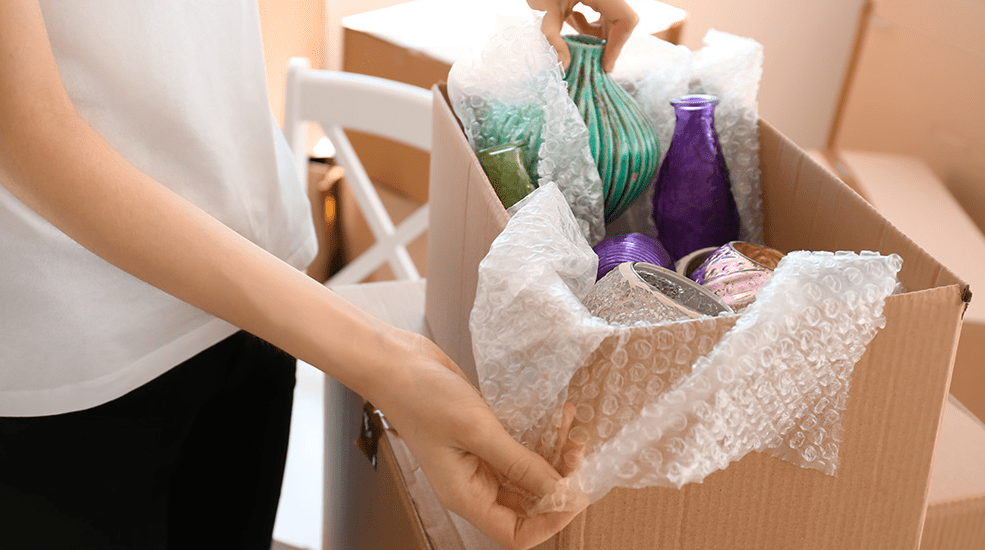Remodels generate dust that can destroy belongings if the owner doesn’t take care. Before a major remodel takes place in your house, you may be required to pack up your belongings and put them somewhere safe. These tips about how to pack your home can help ensure your belongings will be in good condition when the remodel is over.

1. Take Time to Downsize
Think of packing for a home remodel as an opportunity to downsize and eliminate clutter in your home. Start packing months in advance to give yourself time to downsize. Get rid of those things that you haven’t used in a long time, or that won’t match the decor when the remodel is complete. The less stuff you have, the easier and cheaper it will be to store.
2. If Needed, Choose a Storage Facility Wisely
The storage facility you choose will have a big impact on the condition of your personal things when the home remodel is over. Not all storage facilities are created equal. Look for a business with a good reputation and solid policies in place to ensure your personal belongings will be protected.
- Get references or ask people you know for recommendations.
- Tour the facility and ask questions about their pest control measures.
- Find out when the facility is open for you to access your unit.
- Ask about security and how they keep units safe.
Get a climate-controlled facility if possible. Climate control reduces humidity, which is good for belongings like wooden furniture.
If you’re unable to get a climate-controlled facility, do not store items like electronics, makeup, mattresses, large appliances, and clothes in your unit. Without climate control, these items may be damaged by mold or heat.
3. Be Generous With Bubble Wrap
Wrap all fragile items in bubble wrap, including dishes, vases, and lamps. For slightly less fragile items, save money on packing products and use sheets, blankets, or pillows.
4. Know What Not to Pack
Not everything can be stored properly and safely — like perishable food, toxic chemicals, and most liquids. If you decide to use a storage facility, get a list of prohibited items before you start packing. If you’re remodeling your kitchen, be sure to use up as much of your food inventory as possible prior to the remodel.
You should also set aside items you may need to use regularly — like certain cooking utensils — to help save on storage space and keep your daily operations running smoothly. According to Amy Slenker-Smith, owner of Simply Enough, “I encourage clients to think through how they will live and function during the remodel. For kitchens, set up a temporary kitchen with only the essentials, away from the drywall dust. If it’s a bathroom or master bedroom remodel … declutter your clothes and toiletries to reduce storage needs.”
5. Disassemble Furniture Whenever Possible
Take apart furniture before placing it into storage. Disassembling furniture makes it easier to move and easier to store. Place all screws and nuts into a bag, then label it, and tape or attach the bag to the piece of furniture.
Not sure you’ll remember how to reassemble? Take a video of yourself as you take the piece apart. Use this video as a tutorial when it’s time to put things back together.
6. Label Things Properly
Label all boxes clearly with their contents. If the box contains something fragile, write FRAGILE on the outside. Label boxes on all sides and on top so you can tell what you’re looking at no matter which side is visible.
If you’re packing up more than one room worth of stuff, assign colored stickers to each room, then place the colored stickers on the boxes. This prevents you from having to write the names of the rooms where the boxes go over and over again.
7. Make an Inventory
Make an inventory of the most important items that you packed, so you’ll know what’s been placed into storage and what is still at the house. This will prevent you from losing items and will save time when you need to find one specific item.
8. Store Valuables in a Safe
Store valuables in a safe in your home or in a safe at your bank. If storing at home, buy a portable safe that is fireproof and lockable, then keep the key on your keychain. Keeping items locked up prevents confusion and gives you peace of mind.
Preparing and organizing for a remodel can be tough. Make it easier by taking advantage of our Home Organization Promotion today! Professional home organizer and owner of Simply Enough Amy Slenker-Smith is ready to help you pack up your space before a remodel, or reorganize and declutter after the home remodel is complete!
